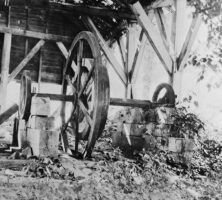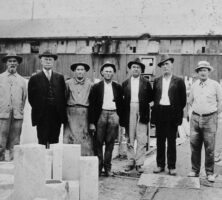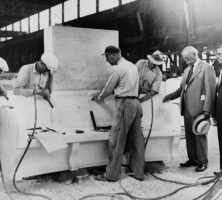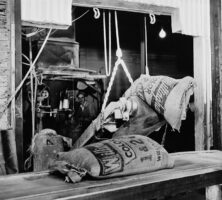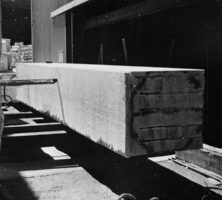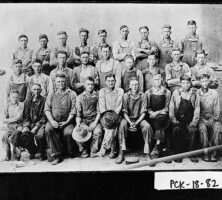Marble, a metamorphosed limestone prized for its hardness and variety, is quarried in north Georgia near Tate, in Pickens County. This marble has been used extensively for gravestones and in buildings throughout the United States, including the U.S. Capitol. Sixty percent of the monuments in Washington, D.C., in fact, are made from Georgia marble.
The earliest known use of Georgia marble dates to 1400, when effigies, bowls, projectile points, and other necessities were carved out of native marble. These early artifacts, found in Pickens County, are part of the permanent exhibit at the Etowah Mounds near Cartersville.
Early Industry
The area’s marble industry began after the mid-1830s, when Henry T. Fitzsimmons, an Irish stonemason, was traveling through north Georgia and discovered outcroppings of surface marble in the Long Swamp Valley of what was then Cherokee County. He immediately obtained the land, opened the Long Swamp Marble Company, and quarried the marble by very crude means. He then carved monuments and memorials that were sold throughout the area.
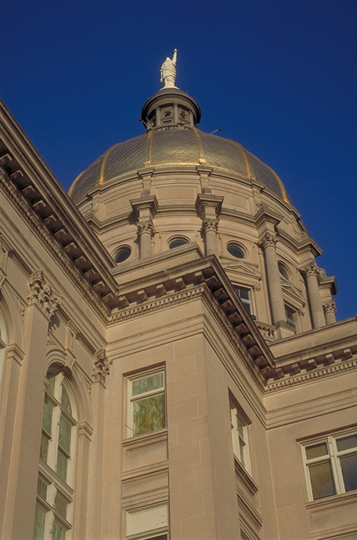
Courtesy of Georgia Department of Economic Development.
Georgia’s next entrepreneur in the marble industry was Samuel Tate, who in the 1830s purchased land lottery tracts in north Georgia, much of which included large marble deposits. In 1845 Tate signed an agreement with James Ferrel, James C. Holmes, and Gideon Roberts, all from Alabama, that allowed for quarrying on his land. There is no evidence, however, that this agreement was ever enacted. In 1850, while continuing to farm, Tate became a partner in a marble company that opened a quarry in the vicinity of the present Georgia Marble Company in the town that later became known as Tate.
Georgia Marble Company
By 1880 the marble industry was defunct, lacking the necessary capital and transportation network to thrive. The arrival of the railroads by 1883 to Pickens County, with the establishment of the Marietta and North Georgia Railroad system, revitalized the industry by providing a means of transporting blocks and finished marble products. Northern capitalists invested in the industry, and the Tate family created the Georgia Marble Company in 1884. Marble finishing plants sprung up in Pickens County; Ball Ground and Canton in Cherokee County; and Marietta in Cobb County.

Courtesy of Georgia Archives.
In the late 1880s Samuel Tate’s sons, Stephen Clayton Tate and William Tate, increased their landholdings in the area and assumed a more direct role in the management of the marble industry. The family signed a twenty-five-year lease of the marble quarries with an option for renewal. Other companies attempted to capitalize on the industry with limited success, but the Tate family successfully expanded the markets for its Georgia Marble Company stone. In addition, Stephen and William Tate were on the board of directors of the Etowah quarry, which opened in 1890 and provided the first truly pink marble.
By 1900 there were 110 men employed in the marble industry in Tate. Over the next ten years, the number of workers increased to 182, and the Georgia Marble Company began to construct employee housing near the marble quarries and mills. Again, however, the company lacked the capital to make needed improvements in the quarrying and finishing operations, and the net profit in 1900 was a little more than $14,000.

Courtesy of Georgia Archives.
Fortunately for the industry, Samuel Tate, Stephen’s son, was named president and general manager of the Georgia Marble Company in 1905. With the help of family and friends, he acquired 6,791 shares of the stock. He immediately added equipment, changed procedures, cleared quarries, and built additional houses for the workers. By 1906 the company’s profit had risen to more than $120,000.
In 1909 the twenty-five-year lease on the quarries expired and was renegotiated with the Tate family. The resulting transaction made the Georgia Marble Company joint owners of certain marble properties with the Stephen C. Tate Estate, an arrangement that continues to this day. Between 1917 and 1920, Georgia Marble Company president “Colonel Sam” Tate, as Samuel Tate was called, bought out the surrounding finishing plants and hired many more employees to complete “finished” marble products in the mill. By 1924 the state geologist of Georgia reported that $1,867,000 worth of Georgia marble had been quarried in Pickens County.
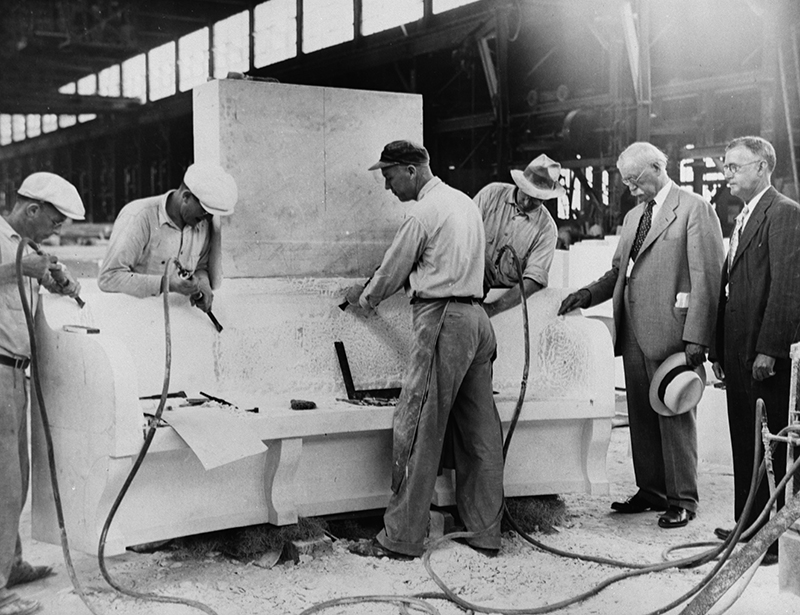
Courtesy of Georgia Archives.
During the marble boom of the 1930s, Georgia marble was utilized for the Longworth House Office Building in Washington, D.C., the Puerto Rican capitol, the New York Stock Exchange, and the Cleveland Federal Reserve Bank and Public Library in Ohio. The value of the Georgia Marble Company was reported to be more than $3.7 million. The company’s success continued through 1932. In 1933 losses were reported to be $225,000, and an attempt to sell the company for $3 million failed. By the time Colonel Sam Tate died in 1938, the company was struggling for solvency again.
In 1941 the board of directors developed an extensive financial restructuring plan to keep the company solvent, a plan that also improved working conditions and increased employee benefits. The electrical plant was sold to the Rural Electrification Administration, and some holdings were liquidated, but monument sales continued to be strong, due to the expertise of the personnel in the design and finishing plant. By 1942 sales for monuments totaled just less than $1 million, and by 1950 they accounted for 51 percent of gross sales. The Calcium Products Division was created in 1947, developing a market for ground and pulverized marble products. Utilizing “waste” marble in the beginning, this section of the industry became the primary product by the late 1980s.
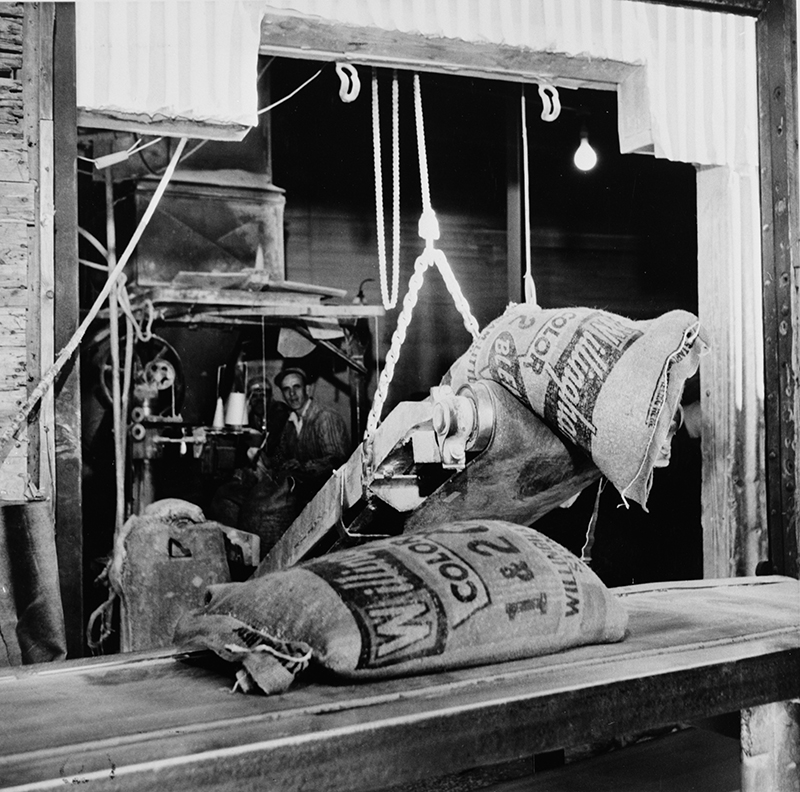
Courtesy of Georgia Archives.
Between 1940 and 2003, the Georgia Marble Company changed hands several times. The Jim Walter Corporation purchased the company in 1969 for $23 million. Succeeding owners were Kolberg, Kravis, Roberts and Company; Hillsborough Holdings Corporation; First Chicago Corporation; and IMERYS. In 2003 Polycor Inc. of Quebec City, Canada, purchased the company. Polycor sells approximately 75 percent of its Georgia marble to governments all over the world. The company spent $5 million to upgrade the plant and equipment, and in July 2005 it announced that Tate would be Polycor’s U.S. headquarters.
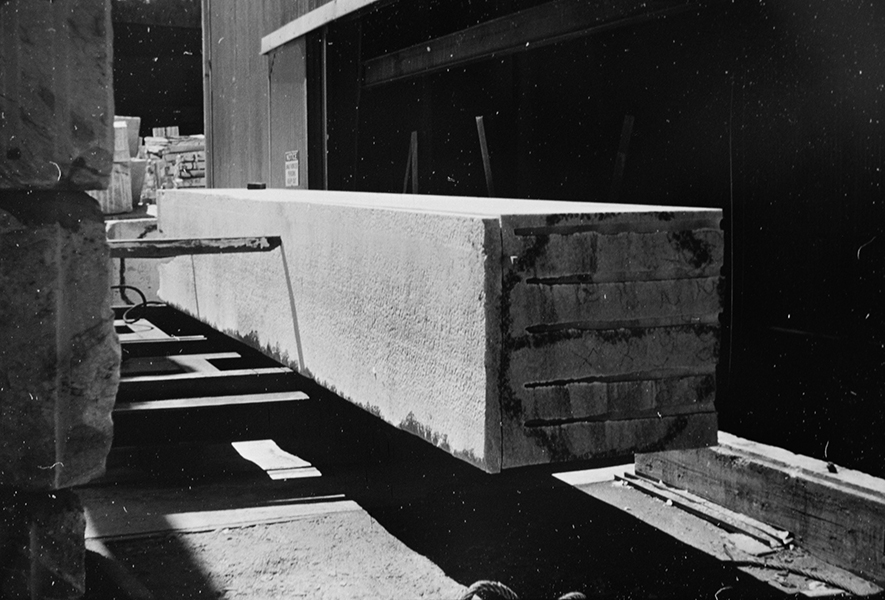
Courtesy of Georgia Archives.
Native Georgia marble has been used within the state on such structures as the state capitol, Lenox Square Mall in Atlanta, and several buildings on the Emory University campus.








